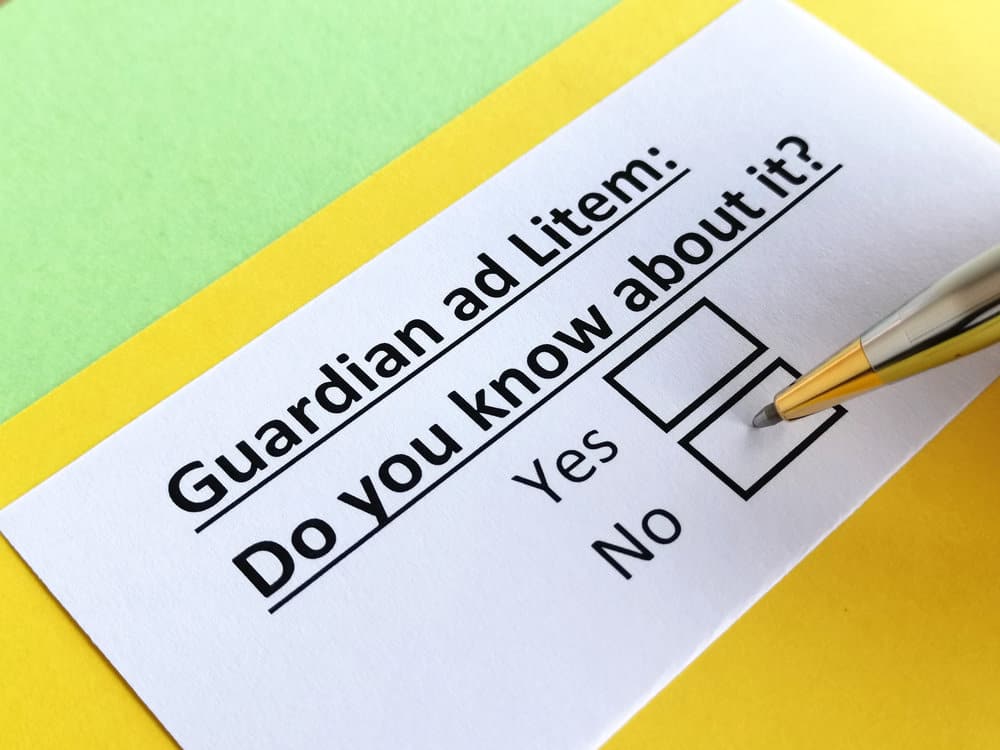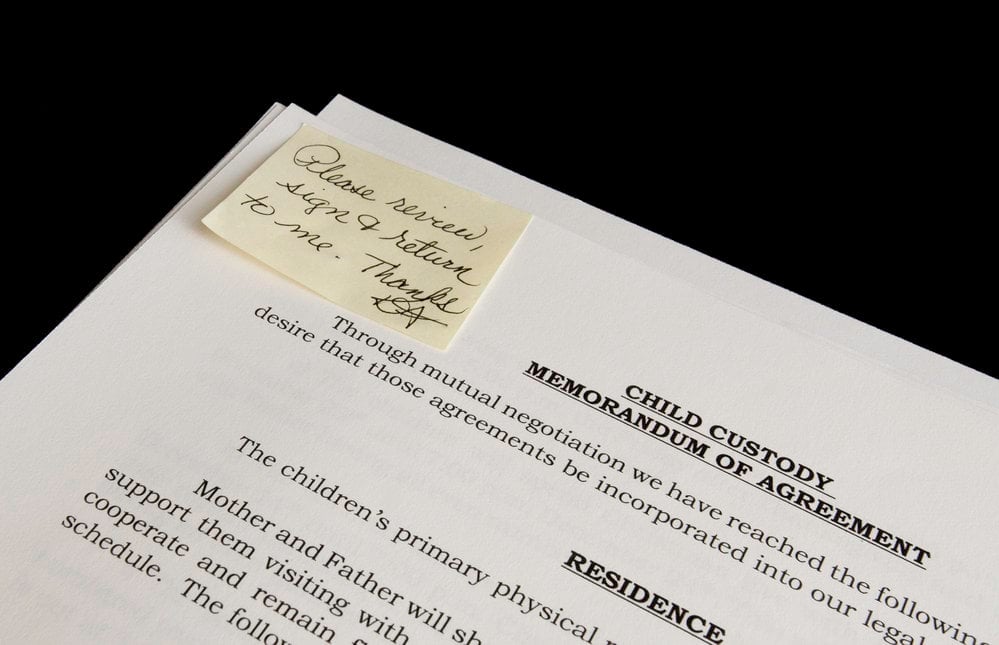A guardian ad litem within the legal system is critical in helping judges make informed decisions regarding the best interest of minors or incompetent individuals. However, a question from this partnership is how often a judge agrees with the recommendations provided by a guardian ad litem. Understanding the level of concurrence between the two parties sheds light on the overall effectiveness of the guardian ad litem system.
A guardian ad litem is appointed to primarily represent the interests of the child or incapacitated individual, carefully investigating and reporting their circumstances and needs. Their findings greatly impact the judge’s decision-making process. While both the judge and the guardian ad litem work together to serve the best interests of the party in question, the judge ultimately makes the final determination.
To examine the frequency of judges agreeing with guardian ad litem recommendations, one must consider various factors, including the qualifications of the individual appointed, the nature of the case, and the jurisdiction’s legal guidelines. A judge’s decisions may not solely rely on the advice of the guardian ad litem, but it is undeniable that their input is a significant factor in the legal proceedings.
Role of Guardian Ad Litem
Duties and Responsibilities
Guardian ad litem (GAL) is a court-appointed representative who acts in the best interest of a child or incapacitated adult in legal proceedings. Their main goal is to ensure the well-being of the person they represent. Some of their key duties and responsibilities include:
- Investigating the facts of the case
- Interviewing the child, parents, and other relevant parties
- Reviewing relevant documents, such as medical records and school reports
- Making recommendations to the court regarding custody, visitation, and other matters
- Monitoring implementation of court orders to ensure compliance
Training and Qualifications
To become a guardian ad litem, one must complete specialized training that varies from state to state but typically includes:
- Introductory courses on child advocacy, family law, and dependency issues
- Training in communication skills and interviewing techniques
- Information on cultural competency and ethical considerations
- Continuing education courses to maintain qualifications
Some states require that guardians ad litem hold a professional license, such as a law or social work degree. In contrast, others only mandate relevant experience working with children or vulnerable adults.
Difference Between Lawyer and Guardian Ad Litem
Although guardians ad litem and lawyers may have similar training in law, there are key differences between the two roles:
| Lawyer | Guardian Ad Litem |
|---|---|
| Represents a client in legal proceedings | Represents the best interests of a child or incapacitated adult |
| Provides legal advice to the client | Provides recommendations to the court based on investigation findings |
| Advocates for client’s wishes | Advocates for the child or incapacitated adult’s best interests |
In summary, the guardian ad litem plays a crucial role in the legal system, focusing on the well-being of children and incapacitated adults. Their duties and responsibilities involve investigating, interviewing, and making recommendations to the court. To qualify for this role, specialized training and qualifications are required. It’s important to note that the role of a guardian ad litem differs from that of an attorney by representing the child’s or adult’s best interests rather than advocating for a specific client’s wishes.

Appointing a Guardian Ad Litem
Custody Cases
In custody cases, the court may appoint a Guardian Ad Litem (GAL) to represent the child’s best interests. The GAL conducts an independent investigation, interviews all relevant parties, and recommends child custody to the judge. The GAL must maintain a neutral, clear, and knowledgeable tone when presenting its findings.
The judge considers the GAL’s recommendation but is not bound to follow it. However, judges typically give substantial weight to the GAL’s recommendations, as they are considered experts in determining the child’s best interests.
Abuse and Neglect Cases
In abuse and neglect cases, the appointment of a GAL is often mandatory. The GAL advocates for the child involved in the case, ensuring their welfare is prioritized throughout the legal process. The judge relies on the GAL’s assessment to make informed decisions on the child’s placement and any necessary protective measures.
A GAL’s role in these cases includes but is not limited to:
- Investigating allegations of abuse or neglect
- Assessing the needs of the child
- Recommending appropriate services
- Monitoring the case’s progress
Divorce Proceedings
During a divorce proceeding, a judge may appoint a GAL if the court feels that the parents may not adequately represent the child’s interests. The GAL’s primary responsibility is to provide an impartial perspective on the child’s best interests concerning custody, visitation, and overall well-being.
In divorce proceedings, the GAL may perform the following tasks:
- Evaluating each parent’s ability and willingness to meet the child’s needs
- Identifying any potential conflicts of interest
- Assessing the child’s relationships with each parent
- Recommending a custody and visitation arrangement
In any case, the judge retains the ultimate authority to decide. However, the GAL’s input significantly influences the court’s decision in the child’s best interest.
Working with the Guardian Ad Litem
Impact on Child Custody Cases
A guardian ad litem plays a crucial role in child custody matters. They are appointed to represent the best interests of the child (ward) in cases involving abuse, neglect, or other contentious matters. Judges often consider the guardian ad litem’s report and recommendations when deciding on a custody case.
Throughout the trial, the guardian ad litem conducts investigations to gather information about the child’s circumstances, such as interviewing the child, parents, teachers, and other adults involved in the child’s life. They also review relevant records to provide a comprehensive assessment.
Cooperating with Investigations
All parties involved in a custody matter must cooperate with the guardian ad litem’s investigation. This includes providing accurate information, access to records, and participating in interviews or other required meetings.
By working with the guardian ad litem, the parties can help ensure the most accurate representation of the child’s needs and best interests is presented to the judge. Cooperation may also lead to a smoother and more efficient trial process.
Expressing Concerns and Complaints
If any party has concerns or complaints regarding the guardian ad litem’s work, it is important to address them professionally and respectfully. Parties can:
- Communicate their concerns directly to the guardian ad litem
- Seek legal guidance through their attorney
- If necessary, approach the court with the issue
Maintaining a clear and open line of communication can help address concerns while preserving the integrity of the guardian ad litem’s role in the case.
Guardian Ad Litem’s Report and Recommendations
Factors Influencing the Report
A Guardian Ad Litem (GAL) is appointed to represent the best interests of a child in cases, including custody cases. In preparing their report and recommendations, a GAL considers various factors such as the child’s needs, the parent’s capacity to meet them, and potential risks or benefits. The GAL will also assess parental cooperation, communication, and history of abuse or neglect.
During the evaluation process, the GAL gathers information from multiple sources, including interviews with the child, parents, teachers, and other relevant parties and reviewing documents such as school and medical records.
Addressing Biases and Objections
To provide an impartial and unbiased report, a GAL must be aware of any potential biases and address them accordingly. Some common biases that may arise include personal beliefs or misconceptions about a particular party, as well as susceptibility to the influence of one party over another. To combat these biases, a GAL should:
- Use objective, fact-based information in their recommendations
- Be transparent about their methodology and decision-making process
- Remain open to feedback and critique from involved parties and the court
If attorneys or parties in the case voice objections to the GAL’s recommendations, they must be considered and addressed. This might include revisiting the evidence, seeking additional input, or clarifying aspects of the report.
Role of Evidence
Evidence plays a crucial role in a GAL’s report and recommendations. They must collect, analyze, and rely on a wide range of evidence to provide accurate and well-informed recommendations. Types of evidence considered include:
- Testimonies from key witnesses, such as parents, teachers, and medical professionals
- School and medical records
- Expert evaluations, including psychological assessments and parenting capacity evaluations
- Documented history of abuse, neglect, or domestic violence
The GAL must weigh the evidence objectively and use it to guide their recommendations, ensuring the child’s best interests are prioritized. A judge will consider the report and recommendations, along with the strength and quality of the evidence when making their final decision in a case.
Judge’s Consideration of Guardian Ad Litem’s Opinion
Weight Given to Recommendations
In most cases, the court greatly values the opinion of the guardian ad litem (GAL), as they are appointed to represent the child’s best interests. The GAL investigates the situation, interviews all relevant parties, and provides a detailed report, including recommendations based on their findings. While the judge is not required to follow the GAL’s recommendations, they typically carry significant weight, as they are primarily focused on the child’s welfare.
Impact on Decision-Making
The court thoroughly examines the GAL’s report and recommendations, considering factors such as the child’s emotional and physical well-being, the ability of the parents to meet the child’s needs, and any patterns of abuse, neglect, or violence. The impact of the opinions may vary, depending on the case’s specifics and the strength of the other evidence presented. Nevertheless, without valid reasons, the judge would rarely discount the GAL’s input entirely.
Cooperation with Other Professionals
A guardian ad litem often works alongside other professionals, such as therapists, social workers, and school personnel, to gather the necessary information for their report. This multidisciplinary approach ensures a more comprehensive understanding of the child’s circumstances, allowing the judge to make a better-informed decision.
By collaborating with other professionals, the GAL’s recommendations can integrate different perspectives and expertise, thereby enhancing their credibility and weight in the eyes of the court. In many cases, this collaboration might lead to stronger recommendations which, in turn, could influence the judge’s final decision more significantly.
Removing a Guardian Ad Litem
Grounds for Removal
A judge may consider removing a guardian ad litem (GAL) from a case for several reasons. These include conflicts of interest, failure to adequately represent the best interests of the allegedly incapacitated person or child, or any other actions that could damage the integrity of the case. Additionally, if a GAL is found to have violated their ethical or professional responsibilities, they may also be removed from their role.
Process and Consequences
Removing a GAL typically begins with a request to the court by one of the involved parties. This request must outline the specific reasons for the proposed removal, such as neglect, conflict of interest, or unprofessional conduct. The court will then evaluate the claims and determine if removal is warranted. Suppose the court decides to remove the GAL. In that case, a replacement may be appointed, and the removed GAL may face the consequences, including disciplinary action or, in severe cases, compensation claims for damages caused by their actions.
Alternatives to Guardians Ad Litem
In some cases, instead of appointing a new GAL, the court may consider alternatives such as:
- Conservators: A conservator may be more appropriate if an incapacitated person needs assistance in managing their financial affairs or property. The court appoints conservators and has specific duties related to the incapacitated individual’s assets and financial well-being.
- Attorneys: In some cases, the court may appoint an attorney to represent the best interests of the individual in question. This may be more appropriate if the individual needs legal representation but not necessarily ongoing protection or advocacy.
- Mediation: For certain disputes, mediation may be a better option. This is a process in which a neutral third party helps the involved parties arrive at an agreement or resolution, typically without needing a GAL.
By exploring these alternatives, the court may identify a solution that better addresses the specific needs and concerns of the involved parties.
Best Interests of the Child
Mental and Emotional Health
A key aspect in a judge’s decision-making process when considering the recommendations of a guardian ad litem is the mental and emotional health of the child. This includes evaluating the child’s needs for therapy, counseling, and any other necessary interventions or support services. A guardian ad litem may assess various factors such as the child’s temperament, experiences of trauma or neglect, and attachment to caregivers to advocate for the child’s best interest.
Stability and Relationships
Stability in a child’s life is crucial to their overall well-being. A judge may look into the child’s current living environment, the stability of the parents or guardians, and the child’s relationships with their family members. Ensuring a stable home is paramount in determining the child’s best interests. A guardian ad litem may present information about the child’s education, extracurricular activities, and social circles, among other aspects, to support their recommendations.
Visitation Rights
Another factor that a judge may take into account when agreeing or disagreeing with a guardian ad litem’s assessment is visitation rights. Balancing the child’s need for contact with their biological parents and maintaining security is vital. The guardian ad litem may recommend specific visitation schedules or details, such as supervised visits or locations, to facilitate contact. A judge would weigh these suggestions based on the child’s emotional state and relationships with their parents.
Parenting Plan and Evaluators
Parenting Plan Basics
A parenting plan is a legal document that outlines how divorced or separated parents will raise, care for, and make decisions about their minor children. The plan covers physical custody, visitation schedules, holidays, education, medical care, and more. Parents may create the plan together, or a judge may decide the details if an agreement cannot be reached.
Working with Parenting Evaluators
Parenting evaluators, also known as child custody evaluators, are professionals who assess the best interests of a child in divorce or separation cases. The court may appoint them, or the parents may select an evaluator. These evaluators are crucial in helping the court determine the most appropriate parenting plan.
Parenting evaluators consider factors such as:
- The child’s emotional, physical, and educational needs
- The ability of each parent to meet these needs
- The child’s relationship with each parent
- The parent’s ability to communicate and cooperate in raising the child
- Any history of domestic violence or abuse
Once the evaluation is completed, a report containing the evaluator’s findings and recommendations is submitted to the court. The judge then considers the evaluator’s recommendations when determining the final parenting plan.
In cases where a guardian ad litem (GAL) is involved, they may work closely with the parenting evaluator to ensure the child’s best interests are represented. A GAL is a court-appointed advocate for the child in a divorce or custody case.
It is not uncommon for judges to agree with the recommendations of both GALs and parenting evaluators, as they are considered neutral parties with the child’s best interests as their primary focus. While there is no specific data on the frequency of judges agreeing with GALs or parenting evaluators, their input is highly regarded in the decision-making process.
In conclusion, a parenting plan is an essential document outlining the responsibilities and expectations of divorced or separated parents. Parenting evaluators and guardian ad litems play significant roles in ensuring that the child’s best interests are represented during the creation of these plans.




